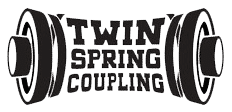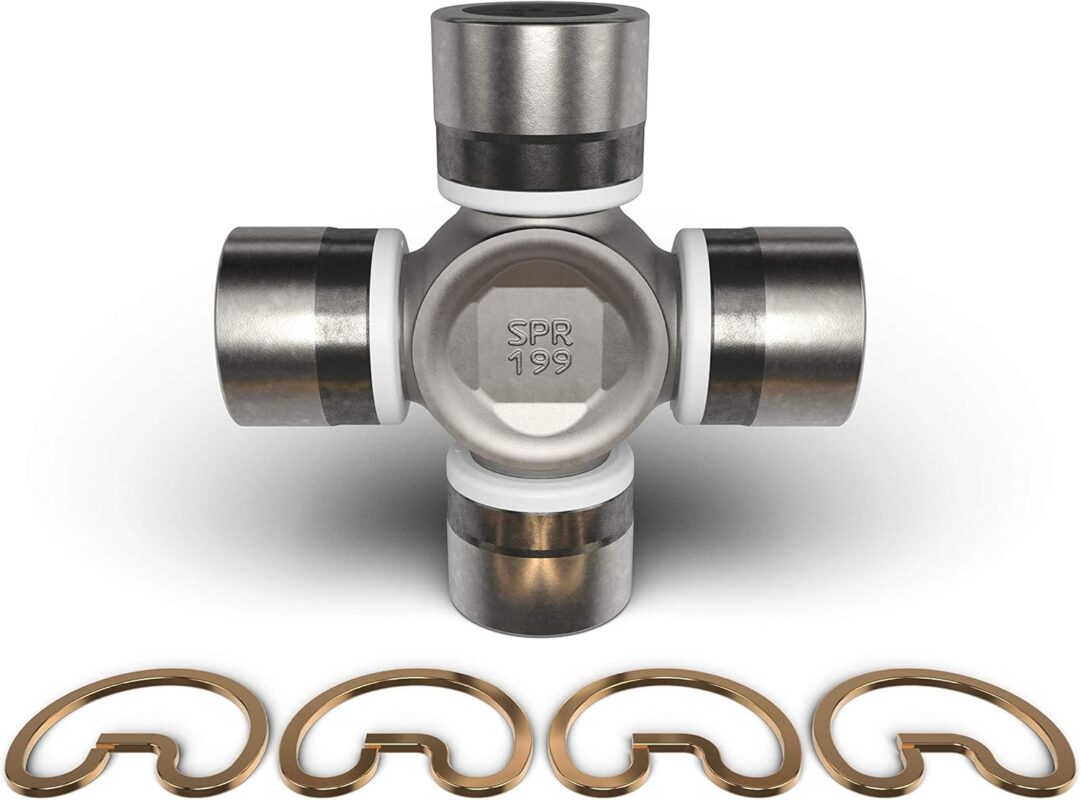The Impact of Universal Joint Angles on Drivetrain Performance
Table of Contents
Universal joints play a crucial role in the performance and longevity of a vehicle’s drivetrain. Understanding how universal joint angles affect drivetrain performance is essential for automotive enthusiasts, mechanics, and engineers alike.
This comprehensive guide will explore the intricacies of universal joint angles, their impact on vehicle performance, and best practices for optimizing drivetrain efficiency.
Understanding Universal Joints and Their Function
Universal joints, commonly referred to as U-joints, are mechanical couplings that allow for angular movement between two shafts while transmitting rotational power. They are essential components in automotive drivetrains, particularly in vehicles with rear-wheel drive or four-wheel drive configurations.
Key Functions of Universal Joints:
- Transmit power from the transmission to the differential
- Allow for changes in driveshaft angle due to suspension movement
- Compensate for misalignment between the transmission and differential
Common Universal Joint Brands
Several well-known manufacturers produce high-quality universal joints for various applications:
- Dana Spicer: Known for their durable and reliable U-joints across a wide range of vehicle types.
- Moog: Offers premium U-joints engineered for dependable, long-lasting performance.
- Neapco: Produces U-joints designed to meet or exceed OEM specifications.
- SKF: Provides precision-engineered U-joints for automotive and industrial applications.
- Precision: Specializes in U-joints for heavy-duty and high-performance applications.
- Timken: Offers a comprehensive line of U-joints for various industries and applications.
- GKN: Produces U-joints for automotive and industrial use, known for their quality and innovation.
- Lovejoy: Manufactures U-joints for industrial power transmission applications.
- NAPA: Offers a range of U-joints for automotive replacement and repair.
- Cardone: Provides remanufactured and new U-joints for various vehicle makes and models.
The Importance of Proper Universal Joint Angles
Correct universal joint angles are critical for several reasons:
- Efficiency: Proper angles ensure smooth power transmission with minimal energy loss.
- Longevity: Correct angles reduce wear on U-joints and other drivetrain components.
- Vibration reduction: Optimal angles minimize driveline vibrations, enhancing ride quality.
- Performance: Proper angles contribute to better overall vehicle performance and handling.
Understanding Operating Angles
The operating angle of a universal joint is the angle that occurs between the driving member and driveshaft, and between the driven member and driveshaft when they are not vertically aligned. The Impact of Universal Joint Angles on Drivetrain Performance, anything outside the suggested angle or for extended amounts of time will cause early failure of the universal joint.
This angle plays a crucial role in determining the performance and lifespan of the U-joint and the entire drivetrain system.
Basic Rules for Universal Joint Operating Angles
- Minimum angle: Universal joint operating angles at each end of a driveshaft should always be at least one-half degree.
- Angle equality: Operating angles on each end of a driveshaft should be equal within one degree of each other (one half degree for motor homes and shafts in front of transfer cases or auxiliary devices).
- Maximum angle: For vibration-free performance, universal joint operating angles should not exceed three degrees.
The Relationship Between Operating Angles and Driveshaft RPM
The maximum allowable operating angle for a universal joint is directly related to the speed of the driveshaft. As driveshaft RPM increases, the maximum allowable operating angle decreases. This relationship is critical for maintaining drivetrain performance and longevity.
Maximum Operating Angle Based on Driveshaft RPM:
| Driveshaft RPM | Max. Operating Angle |
|---|---|
| 5000 | 3.2° |
| 4500 | 3.7° |
| 4000 | 4.2° |
| 3500 | 5.0° |
| 3000 | 5.8° |
| 2500 | 7.0° |
| 2000 | 8.7° |
| 1500 | 11.5° |
It’s important to note that any universal joint operating angle greater than 3 degrees will lower universal joint life and may cause vibration.
Measuring Universal Joint Angles
Accurate measurement of universal joint angles is crucial for optimizing drivetrain performance. Here are some tips for measuring these angles:
Tools Required:
- Protractor accurate to 1⁄4 degree (Spirit level or digital protractor)
Measurement Methods:
- Use adapters for digital protractors to measure slopes directly off bearing caps in light duty or quick disconnect applications.
- Remove the bearing cap and take measurements directly off the yoke.
- Remove the snap ring and measure off the bearing cap using an adapter.
Measurement Tips:
- Measure along the actual centerline of the output shaft.
- Measure on a flat surface 90 degrees to or parallel to the output shaft of the transmission.
- Ensure you’re measuring the true centerline.
The Impact of Incorrect Universal Joint Angles
Improper universal joint angles can lead to various issues that affect drivetrain performance and vehicle operation:
- Increased vibration: Incorrect angles can cause driveline vibrations, leading to a poor driving experience and potential damage to other components.
- Reduced efficiency: Improper angles result in energy loss during power transmission, reducing overall drivetrain efficiency.
- Premature wear: U-joints operating at incorrect angles experience accelerated wear, leading to more frequent replacements and increased maintenance costs.
- Increased heat generation: Incorrect angles can cause U-joints to operate at higher temperatures, potentially leading to lubrication breakdown and component failure.
- Reduced torque transmission: Severe angle misalignment can result in a loss of effective torque transmission to the wheels, impacting vehicle performance.
Factors Affecting Universal Joint Angles
Several factors can influence universal joint angles in a vehicle:
- Suspension modifications: Lifting or lowering a vehicle can significantly alter U-joint angles.
- Engine and transmission mounts: Worn or incorrect mounts can change the orientation of the powertrain, affecting U-joint angles.
- Differential position: Changes in differential height or position can impact the driveshaft angle.
- Vehicle loading: Heavy loads can cause suspension sag, altering U-joint angles.
- Chassis modifications: Any changes to the vehicle’s frame or body can potentially affect drivetrain geometry.
Optimizing Universal Joint Angles for Performance
To ensure optimal drivetrain performance, consider the following strategies:
- Maintain proper vehicle ride height: Ensure the vehicle is at its designed ride height to maintain correct U-joint angles.
- Use adjustable control arms: In lifted vehicles, adjustable control arms can help correct pinion angles and U-joint operating angles.
- Consider driveshaft length: Ensure the driveshaft is the correct length for your vehicle’s configuration to maintain proper U-joint angles.
- Use high-quality U-joints: Invest in high-quality, precision-manufactured U-joints from reputable brands like Dana Spicer, Moog, or SKF that can better handle slight angle variations.
- Regular inspections: Periodically check U-joint angles, especially after any suspension or drivetrain modifications.
The Relationship Between Pinion Angle and Universal Joint Angles
Pinion angle, which refers to the angle of the differential’s pinion gear relative to the driveshaft, is closely related to universal joint angles. Proper pinion angle alignment is crucial for optimal drivetrain performance and longevity.
Impact of Pinion Angle on Universal Joint Performance:
- Torque transfer: Correct pinion angle ensures efficient torque transfer from the driveshaft to the differential.
- Vibration reduction: Proper alignment minimizes driveline vibrations, enhancing overall vehicle performance.
- Component longevity: Correct pinion angle reduces stress on U-joints, extending their lifespan.
Adjusting Pinion Angle:
In vehicles with solid axles, particularly those that have undergone suspension lifts, pinion angle may need adjustment. Methods for correction include:
- Adjustable control arms: These allow for fine-tuning of the pinion angle.
- Shims: Adding or removing shims between the spring perch and axle can adjust pinion angle.
- Wedges: Wedge-shaped blocks can be installed between the spring and axle to alter pinion angle.
Universal Joint Angles in High-Performance Applications
In high-performance and racing applications, proper universal joint angles become even more critical due to the increased power and stress on drivetrain components.
Considerations for High-Performance Vehicles:
- Increased torque: Higher engine output puts more stress on U-joints, making proper angles crucial for reliability.
- Higher RPMs: As driveshaft speeds increase, the tolerance for angle misalignment decreases.
- Launch forces: In drag racing applications, the extreme forces during launch can momentarily alter U-joint angles, requiring careful setup.
Performance Tuning Tips:
- Use a driveshaft safety loop: This safety device can prevent catastrophic failure in case of U-joint breakage at high RPMs.
- Consider a two-piece driveshaft: For vehicles with significant suspension travel, a two-piece driveshaft with a carrier bearing can help maintain proper U-joint angles throughout the suspension’s range of motion.
- Opt for heavy-duty U-joints: In high-torque applications, upgrading to stronger U-joints from brands like Precision or Neapco can provide an additional margin of safety.
The Role of Universal Joint Angles in Vehicle Dynamics
Universal joint angles play a subtle but important role in overall vehicle dynamics:
- Weight transfer: Proper U-joint angles ensure smooth power delivery, which can affect weight transfer during acceleration and cornering.
- Traction: Efficient power transmission through correctly aligned U-joints contributes to better traction, especially in high-performance scenarios.
- Handling consistency: Minimizing driveline vibrations through proper U-joint angles helps maintain consistent handling characteristics.
Future Trends in Universal Joint Technology
As automotive technology continues to advance, we can expect to see developments in universal joint design and implementation:
- Advanced materials: New alloys and composite materials may allow for stronger, lighter U-joints capable of handling higher angles and loads.
- Smart U-joints: Integration of sensors could allow for real-time monitoring of U-joint angles and performance, enabling predictive maintenance.
- Adaptive systems: Future vehicles might incorporate systems that dynamically adjust driveline geometry to maintain optimal U-joint angles under various driving conditions.
The Impact of Universal Joint Angles on Drivetrain Performance Conclusion
Universal joint angles are a critical yet often overlooked aspect of drivetrain performance.
Proper understanding and maintenance of these angles can significantly impact a vehicle’s efficiency, longevity, and overall performance. Whether you’re a casual driver, an off-road enthusiast, or a racing professional, paying attention to universal joint angles will help ensure your vehicle operates at its best.
By following the guidelines for proper angle measurement and adjustment, and considering the factors that influence U-joint performance, you can optimize your vehicle’s drivetrain for smoother operation, reduced vibration, and improved power transmission.
Remember that any modifications to your vehicle’s suspension or drivetrain should be accompanied by a careful assessment and adjustment of universal joint angles to maintain optimal performance and reliability.
When selecting universal joints for your vehicle, consider reputable brands such as Dana Spicer, Moog, Neapco, SKF, or Timken, which offer high-quality products designed to meet or exceed OEM specifications.
These manufacturers provide a range of options suitable for various applications, from daily drivers to high-performance vehicles.
As automotive technology continues to evolve, the importance of proper drivetrain geometry, including universal joint angles, will remain a crucial factor in vehicle design and performance optimization.
Staying informed about these technical aspects of your vehicle can help you make better decisions regarding maintenance, modifications, and performance enhancements, ultimately leading to a more enjoyable and reliable driving experience.

